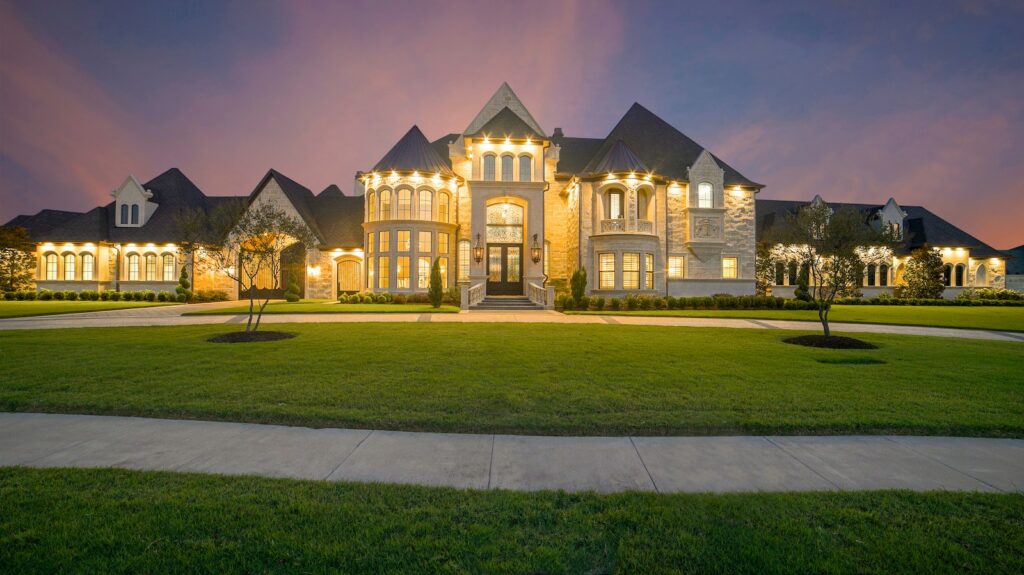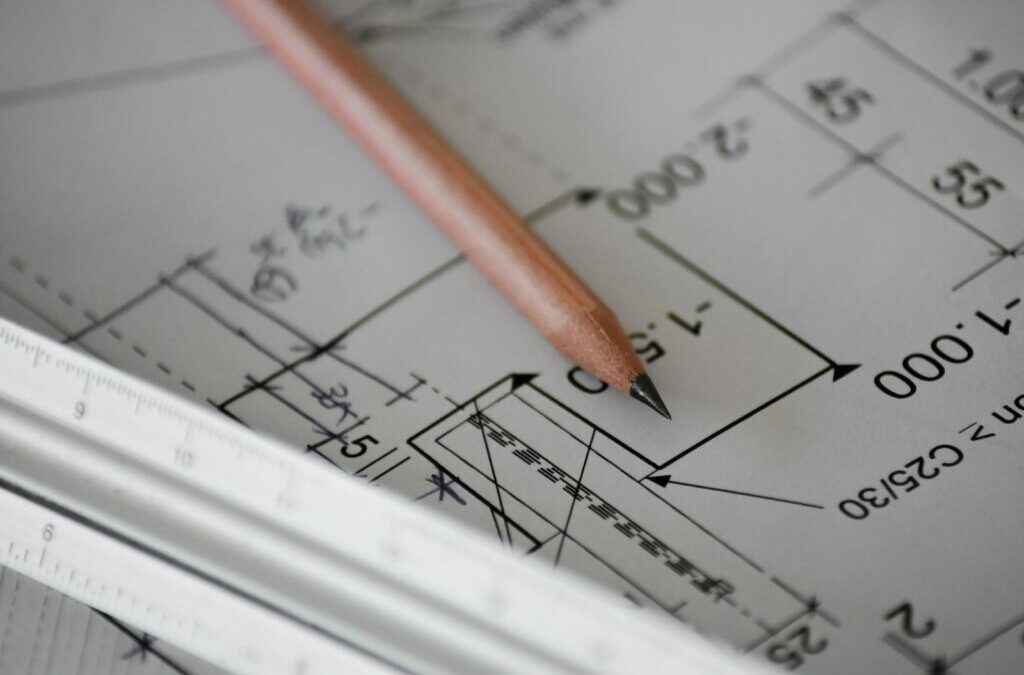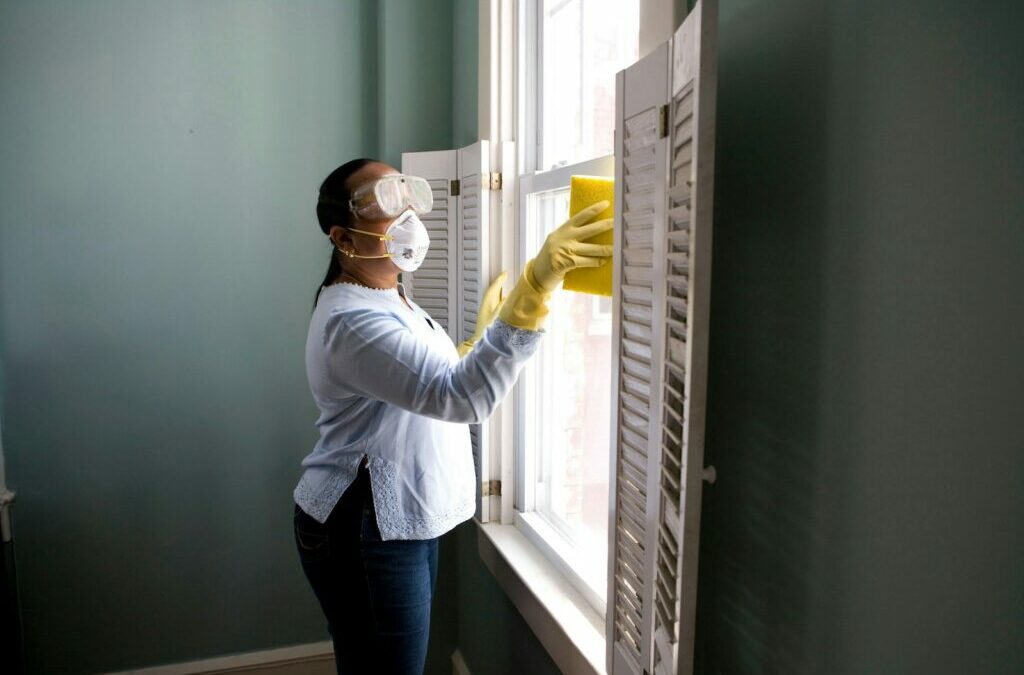
by Fort Worth New Homes | Apr 5, 2024 | Uncategorized
Pioneering Future Living Spaces
Photo by weston m on Unsplash
San Antonio is not just growing; it’s evolving, thanks to a wave of home builders and architects who are blending technology with tradition to push the boundaries of what homes can be. In a city where the past is always present, these innovators are crafting living spaces that promise a future of sustainability, beauty, and smart living. Let’s dive into how these trailblazers are shaping the future of home building in San Antonio.
Embracing Green Building Practices
Sustainability is no longer a buzzword; it’s a blueprint for the future. San Antonio builders are leading the charge with eco-friendly materials and energy-efficient designs. From solar panels to rainwater harvesting systems, the new homes in San Antonio are as kind to the planet as they are to the people living in them.
Smart Homes for a Smart City
The homes of the future are smart, and San Antonio is on the forefront of this trend. Think voice-activated lights, automated security systems, and energy management systems that learn your habits and adjust to save you money. These aren’t just houses; they’re hubs of technology designed to make life easier.
3D Printed Homes: The Next Frontier
Imagine printing your home layer by layer, customizing every detail to fit your needs. It’s not science fiction; it’s happening in San Antonio. 3D printing in construction promises to reduce waste, cut costs, and drastically shorten building times. This could be the key to solving housing shortages and making custom homes accessible to more people.
Design That Pays Homage to Heritage
San Antonio’s rich cultural tapestry is woven into the very fabric of its homes. Builders are marrying modern design with traditional elements, creating spaces that feel contemporary yet deeply rooted in the city’s heritage. From Spanish-inspired courtyards to homes that reflect the rustic charm of Texas Hill Country, the new San Antonio homes are a celebration of the past, present, and future.
Maximizing Indoor-Outdoor Living
In a city blessed with sunshine, outdoor living spaces are a must. San Antonio’s builders are innovating with designs that blur the lines between indoors and out. Expansive windows, sliding doors, and outdoor kitchens are just the beginning. These homes are designed to make the most of the natural beauty that surrounds them, providing a seamless transition from the comfort of the indoors to the allure of the outdoors.
Sustainable Communities: The Bigger Picture
It’s not just about individual homes; it’s about creating communities that embody sustainability and innovation. San Antonio is seeing the rise of developments that prioritize green spaces, communal gardens, and pedestrian-friendly layouts. These communities are designed to foster connections between neighbors and nature, creating a living experience that’s healthy, sustainable, and deeply satisfying.
Adaptive Reuse: Breathing New Life into Old Spaces
San Antonio’s history is filled with buildings of character waiting for a second chance. Innovative builders are transforming these spaces into unique homes, combining historical elements with modern comforts. This approach not only preserves the city’s architectural heritage but also provides creative and unique living spaces for those looking for something out of the ordinary.
The Future is Now
San Antonio’s home building scene is at an exciting crossroads, where innovation meets tradition. These pioneering techniques and approaches are not just shaping the future of housing in San Antonio; they’re setting the standard for what’s possible in the world of home construction. As the city grows, these innovations promise homes that are more sustainable, more intelligent, and more in tune with the needs and values of their inhabitants. Welcome to the future of living in San Antonio.

by Fort Worth New Homes | Mar 29, 2024 | Uncategorized
Top 7 Luxury Home Builders
Photo by Daniel Barnes on Unsplash
San Antonio, a city known for its rich history and vibrant culture, is also a hotspot for luxury living. If you’re dreaming of an upscale, custom home that blends comfort with elegance, look no further. Here’s a curated list of the top 7 luxury home builders in San Antonio, each renowned for their craftsmanship, innovation, and dedication to creating dream homes.
1. McNair Custom Homes
Website: McNair Custom Homes
Specialty: Personalized design and superior quality, emphasizing unparalleled client experiences.
Noteworthy: Known for their attention to detail and commitment to customer satisfaction, McNair Custom Homes crafts homes that perfectly reflect the homeowner’s vision.
2. Todd Glowka Builder, Inc.
Website: Todd Glowka Builder, Inc.
Specialty: Custom homes that blend tradition with luxury, especially in historical areas like Alamo Heights.
Noteworthy: Todd Glowka’s homes are a testament to the builder’s ability to merge classic elegance with modern amenities, catering to a sophisticated clientele.
3. Elevate Design + Build
Website: Elevate Design + Build
Specialty: Integrating modern technology like augmented and virtual reality to help clients visualize their dream homes during the design phase.
Noteworthy: This builder stands out for their innovative approach to home design, allowing for a highly personalized and immersive planning experience.
4. Burdick Custom Homes
Website: Burdick Custom Homes
Specialty: Multi-award-winning designs and a reputation for excellence in craftsmanship.
Noteworthy: With decades of experience, Burdick Custom Homes is synonymous with luxury living in San Antonio, offering designs that are both timeless and tailored to individual client needs.
5. Creative Custom Builders
Website: Creative Custom Builders
Specialty: High-quality materials and workmanship, with a keen eye for customer satisfaction.
Noteworthy: They are dedicated to creating unique, luxury homes that not only meet but exceed their clients’ expectations.
6. Adam Michael Custom Homes
Website: Adam Michael Custom Homes
Specialty: Luxury homes that harmoniously blend with the Texas landscape, offering both beauty and functionality.
Noteworthy: Their commitment to quality and detail ensures that every home is a masterpiece of comfort and style, designed to reflect the homeowner’s personality.
7. Stadler Custom Homes
Website: Stadler Custom Homes
Specialty: Bespoke designs and an individualized building experience, focusing on luxury and innovation.
Noteworthy: Stadler Custom Homes is known for its exceptional service and ability to create spaces that are both luxurious and intimately connected to the needs of their clients.
San Antonio’s luxury home market is rich with options for those seeking an exclusive lifestyle. These seven builders represent the best of the best, offering unparalleled expertise, innovation, and dedication to crafting homes that are as unique as their owners. Whether you’re drawn to the timeless elegance of traditional designs or the sleek sophistication of modern architecture, San Antonio’s luxury home builders can turn your dream home into a reality.

by Fort Worth New Homes | Mar 22, 2024 | Uncategorized
Photo by Sven Mieke on Unsplash
Ah, San Antonio! A city where the warmth of the sun is matched only by the warmth of its people. And what better way to plant your roots in this vibrant city than by building your very own dream home? Sure, it might seem like a daunting task, with all the zoning laws, permits, and design choices swirling around. But fear not! We’re here to break it down for you, step by easy step, turning what could be a maze of decisions into a straightforward path to your future doorstep.
First Things First: Laying the Groundwork
Before you even think about picking out paint colors or kitchen tiles, there’s some groundwork to be done. And we mean that quite literally.
Get to Know the Rules
San Antonio, like any city worth its salt, has rules to ensure that buildings are safe, sustainable, and don’t stick out like a sore thumb in their neighborhoods. The City of San Antonio’s Development Services is your go-to for snagging a building permit, which you’ll definitely need before breaking ground. This permit process isn’t just red tape; it’s a way to make sure your dream home is up to snuff, adhering to the city’s building codes and zoning laws.
Pick the Perfect Spot
Choosing where to build is about more than just the view (though that’s important too!). You’ll need to consider the lay of the land, access to local amenities, and even the risk of flooding. Teaming up with a real estate pro who knows the ins and outs of San Antonio’s land can make all the difference in finding a lot that’s not just a piece of land, but a foundation for your future.
Designing Your Dream
Here’s where it gets fun. Designing your home is the chance to bring your vision to life, from the flow of the floor plan to the architectural style that speaks to you. Whether you’re all about that modern minimalism or leaning towards a classic Texas ranch, teaming up with a skilled architect or home builder can help translate your dreams into blueprints.
Budgeting: Keeping Your Dream Within Reach
Dreaming big is great, but it’s also important to keep your feet on the ground, financially speaking.
Crunching the Numbers
Building a home isn’t cheap, but careful planning can keep you from breaking the bank. Costs can vary widely, from the price of the land to the materials and labor needed to bring your home to life. Don’t forget to set aside a little extra for those unexpected expenses—they always pop up!
Financing Your Build
Unless you’ve got a treasure chest buried in your backyard, you’ll likely need a construction loan to finance your build. These loans cover the construction costs and then convert to a regular mortgage once your home is ready to move in. Shopping around for the best rates and terms can save you a lot in the long run.
Keeping a Lid on Costs
Staying on budget means keeping a close eye on expenses and being flexible. Unexpected costs are par for the course, so having a contingency fund is a smart move. Regular check-ins with your contractor can help ensure that your project stays on track and within budget.
The Dream Team: Assembling Your Crew
Building a home is a team effort, requiring a mix of skilled professionals to turn plans into reality.
Finding a General Contractor
Think of your general contractor as the captain of your ship, steering the construction process, keeping the crew in line, and making sure your home is built to your specifications and standards. A contractor with a solid track record and glowing recommendations is worth their weight in gold.
Collaborating with Architects and Designers
Architects and designers are the artists of the construction world, bringing beauty and functionality together in your home’s design. Choose professionals who get your vision and have the skills to make it happen, ensuring your home is not only gorgeous but also a joy to live in.
The Role of Subcontractors
Subcontractors are the specialists—think electricians, plumbers, and carpenters—who handle the various parts of your build. A good general contractor will bring together a team of reliable subs to work on your project, ensuring quality work across the board.
Breaking Ground: The Construction Journey
With planning and prep out of the way, it’s time to get your hands dirty (figuratively, of course—let the pros handle the actual dirt).
Preparing the Site
Site prep is all about starting on the right foot. This means grading the land for proper drainage and making sure everything’s ready for the foundation.
Pouring the Foundation
The foundation is, well, the foundation of your home. It needs to be strong, stable, and suited to San Antonio’s climate. This stage is critical, as a solid foundation sets the tone for the entire build.
Step by Step, Brick by Brick
Construction is a symphony of steps, from framing and roofing to installing windows and doors. Each phase requires meticulous attention to detail and adherence to building codes, ensuring your home is not just beautiful but safe and sound.
The Finishing Touches: Making It Yours
The end is in sight, and it’s time to put your personal stamp on the place.
Interior and Exterior Finishes
This is where your home’s personality shines through, from the paint colors and flooring to the siding and landscaping. Choosing finishes that reflect your style and meet your needs is the key to turning a house into your home.
The Final Inspections
Before you can move in, your home must pass a series of inspections to ensure everything is up to code. Once you’ve got the green light, it’s time to get those keys and step into your new life.
The Homestretch: Moving In
With construction complete, the final walkthrough is your chance to make sure every detail is perfect. Once you’re satisfied, it’s time to close the project, obtain your certificate of occupancy, and finally, move into your dream home.
Building a home in San Antonio is an adventure, full of decisions, challenges, and ultimately, the joy of creating a space that’s uniquely yours. With the right preparation, team, and mindset, you can watch your dream home rise from the ground up, ready to be filled with life and memories for years to come. Welcome home, San Antonio!

by Fort Worth New Homes | Mar 15, 2024 | Uncategorized
Photo by CDC on Unsplash
Ah, spring in San Antonio! As the bluebonnets bloom and the city shakes off the mild chill of winter, it’s the perfect time for homeowners to tackle those much-needed maintenance tasks. Spring maintenance is crucial for keeping your home in tip-top shape and preventing costly repairs down the line. Whether you’re nestled in the heart of the city or enjoying the suburban life, this checklist will guide you through the essential steps to get your San Antonio home spring-ready in 2024.
Ready to roll up your sleeves and give your home a spring refresh? Let’s jump right in!
HVAC System Check
San Antonio summers are no joke, and the last thing you want is your AC giving out when you need it most. Spring is the perfect time for an HVAC tune-up. Replace filters, check for any leaks, and consider a professional inspection to ensure your system is efficient and ready to beat the heat.
Roof and Gutter Inspection
Winter weather, even in Texas, can be tough on your roof and gutters. Look for loose shingles, signs of water damage, and clear out any debris from your gutters. This not only prevents water damage but also prepares your home for those spring showers.
Exterior Paint Touch-Ups
The bright San Antonio sun can fade and chip exterior paint. Spring is a great time to do touch-ups or a full repaint if necessary. Not only does this improve your home’s curb appeal, but it also provides an extra layer of protection against the elements.
Landscaping and Lawn Care
Get your yard spring-ready by trimming overgrown bushes, fertilizing the lawn, and planting seasonal flowers. Consider xeriscaping or drought-tolerant plants to create a beautiful, low-maintenance landscape that can withstand the Texas heat.
Window and Door Seals
Check the seals around windows and doors for any leaks or damage. Replacing worn seals can improve energy efficiency, keeping your home cooler during the upcoming hot months and reducing your energy bills.
Pest Control
Spring is when many pests become active again. Inspect your home for any signs of infestation or entry points for critters. Consider a professional pest control service to keep your home bug-free throughout the season.
Sprinkler System Check
If you have a sprinkler system, now’s the time to check for any leaks or malfunctioning sprinkler heads. A well-maintained system ensures your lawn and garden stay hydrated without wasting water.
Deck and Patio Maintenance
Inspect your deck, patio, or outdoor living spaces for any needed repairs. Look for loose boards or tiles and check railings for stability. Cleaning and resealing wood decks can also extend their life and beauty.
Safety Equipment Check
Ensure your home’s safety by checking smoke detectors, carbon monoxide detectors, and fire extinguishers. Replace batteries and test each device to ensure they’re working correctly.
Deep Clean and Declutter
Lastly, a good spring cleaning can rejuvenate your home. Declutter rooms, donate unused items, and give your home a thorough cleaning. Don’t forget to clean areas that are often overlooked, like behind appliances and the tops of cabinets.
Embrace the Season with a Well-Maintained Home
Spring in San Antonio is a time of renewal and refreshment, not just for nature but for our homes as well. By ticking off the items on this spring maintenance checklist, you ensure your home is prepared to face the warmer months ahead with confidence. Not only does regular maintenance protect your investment, but it also provides you with peace of mind, allowing you to enjoy the beauty and activities that San Antonio has to offer during this vibrant season.
What are your spring maintenance rituals?
And that wraps up your go-to spring home maintenance checklist for San Antonio residents in 2024. Tackling these tasks not only keeps your home looking great and functioning well but also sets you up for a more relaxed, enjoyable summer. So, here’s to a productive spring season and to homes in San Antonio that are as welcoming and vibrant as the city itself!

by Fort Worth New Homes | Mar 8, 2024 | Uncategorized
Your Essential Guide to Understanding Mortgages
Photo by Kelly Sikkema on Unsplash
Navigating the journey of home financing in San Antonio requires an understanding of the various mortgage options available to prospective homeowners. In a city where the housing market dynamics are unique, finding the right mortgage product can be critical to purchasing a home successfully. Mortgages, in essence, represent a loan provided by a financial institution, allowing individuals to buy a property by paying back the borrowed amount over a specified period, typically with interest.
For beginners, the process of securing a mortgage might seem complex due to the variety of products and terms involved. In San Antonio, options range from conventional loans that may require substantial credit scores to government-backed loans, such as FHA and VA loans, which offer more lenient credit requirements for certain buyers. Understanding these options and how they relate to individual financial situations is a foundational step in making an informed decision.
A mortgage is much more than just a loan; it is a commitment that involves strategic planning and a clear grasp of one’s financial horizon. Repayment plans, interest rates, and other key terms are critical components that shape the monthly payments and overall affordability of a home. Therefore, individuals are encouraged to carefully evaluate their financing options in San Antonio to ensure that the chosen mortgage aligns with their long-term financial goals.
Understanding Home Financing Basics
When embarking on the journey of homeownership, understanding the basics of home financing is essential. A mortgage is a type of loan specifically designed to purchase real estate. It is secured against the property itself, which serves as collateral.
Interest rates are a critical aspect of mortgages, significantly affecting monthly payments and the total cost over the life of the loan. They can be fixed, remaining constant throughout the term, or variable, fluctuating with market conditions.
The principal is the actual amount borrowed to purchase the home, while equity represents the home’s value owned by the buyer, increasing as they make payments against the mortgage.
Down payments are initial payments made towards the purchase of the property, typically expressed as a percentage of the home’s price. Making a larger down payment can result in more favorable loan terms.
Lenders assess a borrower’s credit score, income, assets, and debt-to-income ratio to determine loan eligibility. A higher credit score indicates a greater likelihood of repaying the loan, potentially securing lower interest rates. The debt-to-income ratio helps lenders evaluate a borrower’s financial health and ability to repay the loan.
Mortgages can be structured in various forms and lengths, affecting the repayment schedule and interest payments. When choosing a mortgage:
Fixed-Rate: Offers stability with unchanging monthly payments.
Adjustable-Rate: May start with a lower rate that adjusts over time.
Potential homeowners must thoroughly compare mortgage options and understand the terms before committing to a loan. Making informed decisions helps pave the way for long-term financial stability and successful homeownership.
Exploring Types of Mortgages
When searching for the perfect home in San Antonio, understanding the variety of mortgage options available is critical. Each type of mortgage offers different benefits and requirements that cater to various financial situations and buying needs.
Conventional Loans
Conventional loans are not guaranteed by the government and are a popular choice for borrowers with good credit scores and stable income. They typically require a higher down payment, but offer competitive interest rates and flexible terms. For those looking to buy in San Antonio, conventional loans can be a viable route, especially with a strong financial background.
Government-Insured Mortgages
Government-insured mortgages include FHA loans, which are accessible for buyers with lower credit scores and smaller down payments. The program is backed by the Federal Housing Administration. VA loans offer military service members and veterans exceptional benefits, such as no down payment and no private mortgage insurance. USDA loans aim to assist rural homebuyers and generally require no down payment.
Fixed-Rate Mortgages
Fixed-rate mortgages maintain the same interest rate throughout the duration of the loan, offering predictability in monthly payments. This stability makes budgeting easier for homeowners who prefer consistent payment schedules over the loan’s life, which often spans 15 to 30 years.
Adjustable-Rate Mortgages
With adjustable-rate mortgages (ARMs), the interest rate can change over time based on market conditions. Typically starting with a lower rate than fixed-rate mortgages, ARMs offer initial savings. However, the fluctuating interest could result in higher payments down the line, which is an important consideration for buyers.
Jumbo Loans
For those seeking properties that exceed the conventional loan limits set by Fannie Mae and Freddie Mac, jumbo loans are the go-to option. They come with stricter credit score and down payment requirements but enable the financing of luxury homes and properties in San Antonio’s more exclusive neighborhoods.
The Mortgage Application Process
The mortgage application process involves several crucial steps that prospective homeowners need to navigate. The process is designed to assess the borrower’s ability to repay the loan and entails providing tangible proof of income, undergoing a creditworthiness assessment, and satisfying lender-specific eligibility criteria.
Determining Eligibility
Lenders have distinct eligibility requirements for borrowers. These criteria often include minimum age, residency status, and employment conditions. Potential homeowners should first ascertain that they meet these basic thresholds before embarking on the application process. For instance, lenders in San Antonio may seek proof that applicants have a stable job history within the area.
Documentation and Proof of Income
Gathering the necessary documentation is vital. Borrowers must provide evidence of their financial situation, which typically includes:
Tax returns from the past two years
Recent pay stubs
Proof of additional income streams, such as rental income or investments This documentation helps lenders in San Antonio gauge an applicant’s capacity to afford a mortgage by assessing their income against the potential mortgage payments.
Creditworthiness Assessment
Lenders perform a thorough review of an applicant’s credit history and credit score to evaluate the risk of lending. A good credit score suggests a history of timely bill payments and responsible credit management, leading to better mortgage terms:
Credit scores above 670 are generally considered good
Scores between 580 to 669 are seen as fair
Those under 580 may face challenges in securing favorable mortgage rates or approval Applicants are assessed on their past financial behavior, and those with higher credit scores might find a wider selection of loan options available to them.
Financial Considerations and Planning
When embarking on the journey of home financing in San Antonio, prospective homeowners must carefully plan their finances, factoring in monthly payments, insurance, taxes, and other incidental costs associated with homeownership.
Assessing Monthly Mortgage Payment
Monthly mortgage payments are a pivotal component of home financing. They primarily constitute principal and interest, but may also include items such as private mortgage insurance (PMI) if the down payment is less than 20%. Using an amortization calculator can illustrate how these payments will change over the life of the loan.
Understanding Taxes and Insurance
Homeowners in San Antonio need to be aware of Texas property taxes and homeowners insurance. Property taxes in Texas are among the highest in the U.S., which significantly impacts the overall cost of owning a home. Homeowners insurance is another vital component to budget for, as it protects from potential losses and damages. Both expenses should be included in the escrow of the monthly mortgage payment.
Budgeting for Additional Homeownership Costs
Apart from mortgage payments, property taxes, and insurance, homebuyers should budget for additional costs associated with a home purchase. These can include closing costs, which generally range from 2% to 5% of the home’s purchase price, as well as potential repairs and maintenance expenses. It is essential to maintain a fund for such unforeseen outlays to ensure financial stability.
Finding the Right Lender
When embarking on the home-buying journey in San Antonio, the selection of a mortgage lender is a pivotal decision. This process involves careful comparison of lender offers and astute negotiation of loan terms. The goal is to secure a mortgage that aligns with one’s financial situation and homeownership objectives.
Comparing Lender Offers
Prospective homeowners should rigorously compare various mortgage lenders, examining both the interest rates and the overall loan terms they provide. Key considerations include:
Interest rates: These can be variable or fixed and impact the overall cost of the loan. The website San Antonio Mortgage provides insights into how one can find a mortgage with favorable terms.
Loan terms: These determine the repayment period, which typically ranges between 15 and 30 years. It’s essential to assess how the loan duration affects monthly payments and the total interest paid over time.
A methodical approach would involve tabulating offers to easily juxtapose the different aspects of each lender’s proposal.
Negotiating Loan Terms
Once a pool of potential lenders has been identified, negotiation begins. Borrowers can discuss terms and sometimes even get lenders to offer more competitive rates, especially if they have good credit and a solid financial history. They should focus on:
Mortgage rates: It may be possible to negotiate the rate down or find promotional rates, particularly if the borrower has a strong credit profile.
Closing costs and fees: Sometimes, there’s room to reduce these expenses or spread them out over the life of the loan.
Borrowers can leverage the information provided by Lone Star Financing, illustrating the benefits of negotiating with San Antonio mortgage lenders.
Making an Offer and Closing
The steps of making an offer and closing on a home in San Antonio are crucial and involve working with real estate professionals, understanding property values, and preparing for various fees. It’s imperative that prospective homeowners familiarize themselves with these procedures to ensure a smooth transition into homeownership.
Working with a Real Estate Agent
A real estate agent is instrumental in the offer process, providing invaluable insights into market trends and helping to determine a competitive purchase price. They guide buyers through crafting an offer that is attractive to sellers while ensuring their client’s interests are protected. For those navigating the San Antonio market, an agent’s local expertise can be the difference between an accepted offer and one that is overlooked.
The Home Appraisal and Inspection
Appraisal fees and attorney fees are important considerations when finalizing a home purchase. The home appraisal reassures lenders that the property value aligns with the agreed-upon purchase price. This ensures the home is a sound investment. In addition, a thorough home inspection is crucial, as it can uncover any issues that may need to be addressed before closing.
Finalizing the Purchase
Closing on a home involves several steps, including but not limited to reviewing attorney-prepared documents, obtaining title insurance, and covering closing costs. These costs may account for a significant amount of the transaction and vary based on the property values and specifics of the deal. It’s essential for buyers to be prepared for these expenses, which typically include loan origination fees, title insurance, taxes, and any additional legal fees, leading up to receiving the keys to their new home.
Special Programs for Buyers
San Antonio offers a variety of tailored financing solutions to support specific groups of homebuyers. These special programs provide financial assistance and favorable terms to ensure that homeownership is accessible for first-time buyers, veterans, and those who may not qualify for conventional loans.
First-Time Homebuyer Programs
In San Antonio, first-time homebuyers may be eligible for the Homeownership Incentive Program (HIP120). This program offers 0% interest loans ranging from $1,000 to $15,000, with 75% of the loan potentially being forgiven over a 10-year period if certain conditions are met.
Loan Forgiveness: A portion of the HIP120 loan may not require repayment after 10 years.
Home Purchase Price Limits: There may be limits on the purchase price of the home to be eligible for HIP120.
Veterans Affairs (VA) Loans
For veterans, San Antonio provides access to VA loans, which are mortgage loans guaranteed by the U.S. Department of Veterans Affairs. These loans offer significant benefits:
No Down Payment: Qualified veterans can secure a mortgage with no down payment.
No Private Mortgage Insurance: VA loans do not require borrowers to pay private mortgage insurance (PMI), which reduces monthly payments.
Federal Housing Administration (FHA) Loans
FHA loans are also available in San Antonio, supported by the Federal Housing Administration. They are a popular choice for first-time homebuyers due to their lower entry requirements.
Lower Down Payments: Down payments can be as low as 3.5% of the home’s purchase price.
Credit Flexibility: FHA loans have more lenient credit score requirements than many conventional loans.
Long-Term Mortgage Management
Managing your mortgage over the long term involves understanding the complexity of interest rates and the implications of refinancing, as well as recognizing the potential risks that could lead to foreclosure.
Dealing with Adjustable Rates and Refinancing
Homeowners with an adjustable rate mortgage (ARM) should be aware of the potential fluctuation in their monthly mortgage payment. The initial lower interest rates of an ARM can rise, impacting the monthly dues significantly. Observing market trends and acting before the end of the fixed-rate period can save one from payment shocks. If interest rates drop or your financial stability improves, refinancing to a fixed-rate mortgage could be a strategic move that offers more predictable monthly payments.
Understanding Foreclosure Risks
Foreclosure is a legal process where a lender attempts to recover the balance of a loan from a borrower who has defaulted. Defaulting on a mortgage means failing to make the agreed upon monthly payments. This can eventually lead to the lender taking possession of the property. To mitigate this risk, borrowers should have a clear understanding of their loan terms, loan limits, and have a financial plan in place to address hardships. Being proactive in seeking loan modifications or exploring a second mortgage can provide alternatives to foreclosure under certain circumstances.
Investing in San Antonio’s Real Estate Market
When considering investments in San Antonio’s real estate, it’s crucial to analyze market trends and property values. This section guides beginners through the intricacies of investing in this vibrant market, offering insights on what factors to consider.
Analysing Market Trends
In San Antonio, the real estate market has shown growth, with certain fluctuations in prices over recent times. For instance, there was a reported 2.5% increase in average prices in Bexar County, an indicator of the market’s value appreciation. This suggests a relatively stable investment opportunity. However, it is essential to constantly monitor these trends as they can have substantial effects on investment decisions.
Evaluating Neighborhood and Property Values
Property values in San Antonio vary significantly by neighborhood. In October 2022, the median sale price for a single-family home was reported at $280,000, implying a growing but competitive market. Experts suggest that the choice of neighborhood can significantly influence investment returns due to these differences in property values. Prospective investors should assess individual neighborhoods thoroughly, considering factors such as location, community amenities, and local development plans, which all can impact the potential for property value appreciation.
Conclusion
Embarking on the home financing journey in San Antonio can be a transformative experience for first-time homebuyers. They are advised to carefully evaluate mortgage options and recognize the significance of each decision in the context of their long-term financial health.
Fixed-rate mortgages provide stability with consistent monthly payments.
Adjustable-rate mortgages (ARMs) may offer lower initial payments but carry the risk of future rate increases.
Educating oneself about the mortgage process is crucial. A clear grasp of terms and procedures will boost one’s confidence throughout the home buying experience.
It is recommended for buyers to:
Establish a budget to determine their affordability range.
Gather necessary documents early to streamline the approval process.
Consult with real estate professionals who offer guide for first-time homebuyers to navigate the San Antonio market with greater ease.
Potential homeowners should also explore various home loan options and consider their compatibility with different types of home loans available in San Antonio. Personal circumstances and the housing market’s current state play significant roles in this pivotal financial commitment.
In conclusion, a diligent approach to understanding and choosing the right mortgage will lay a stable foundation for homeownership. Assistance from experienced real estate agents and mortgage professionals will further ensure that buyers make well-informed decisions.








